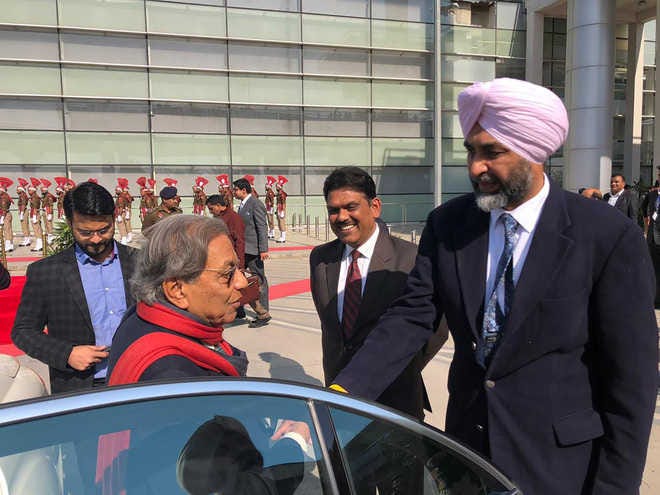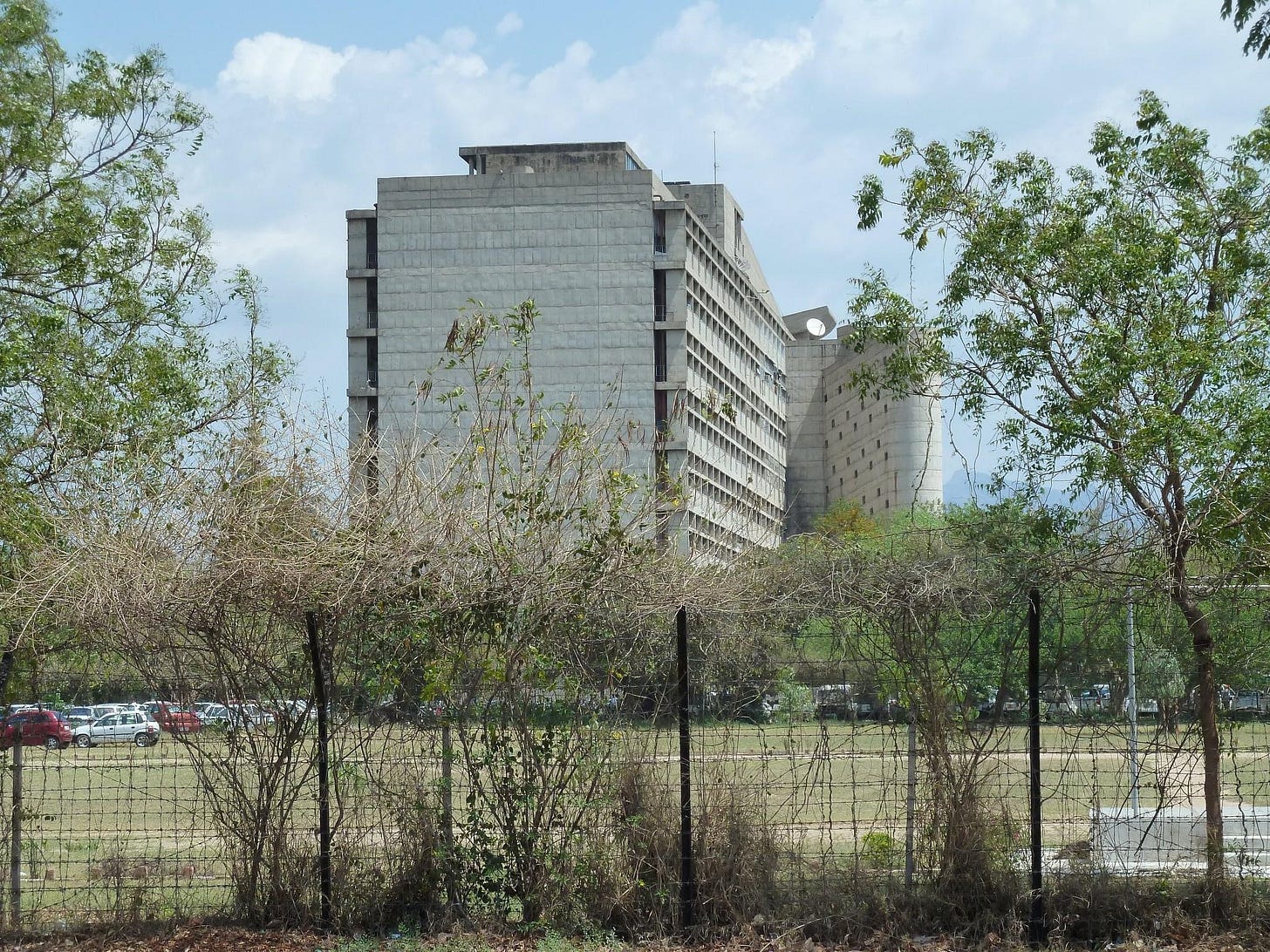Punjab’s Onerous Task of Presenting a Compelling Case before the Central Finance Commission
With a debt of ₹3.74 lakh crore, ballooning employee wages & pension expenses, and a committed expenditure on power subsidies, Punjab faces an uphill task. End of GST Compensation adds to its woes.
Welcoming the Central Finance Commission to Chandigarh
Punjab is preparing for a crucial moment in its fiscal management as the 16th Finance Commission, led by Dr. Arvind Panagariya, is set to visit the state on July 22-23, 2024. Dr. Panagariya, renowned for his role as the first Vice Chairman of the NITI Aayog (2015-2017), brings significant expertise to his position as Chairman of the Commission. Staring into a burgeoning debt, sluggish growth in its own tax revenues, and significant pre-committed expenses, Punjab heavily relies on central funds for vital development projects. The state's challenge is immense: it must secure a larger share of these funds amidst tough fiscal conditions. The effectiveness with which Punjab's top bureaucrats, guided by the political leadership, are able to present their case before this influential multi-member constitutional body will crucially shape the state's financial path. This, in turn, will impact its capacity to implement socio-economic policies and ambitious infrastructure projects.
Challenges in Allocating Central Funds to Punjab
Given Punjab's limited geographical area and population relative to the country as a whole, two parameters that overwhelmingly influence the allocation of the state's share in central taxes, Punjab's slice of this national pie has traditionally been quite small. Historically, it has hovered around 1.5%, dipping as low as 1.3% during the 12th Finance Commission (2005-10). This percentage pertained to Punjab's share in all shareable central taxes, excluding service tax. By contrast, the 15th Finance Commission marked a slight improvement, recommending a 1.8% share for Punjab for the period 2021-26, the highest allocation in recent decades. Consequently, without a special dispensation from the Central Finance Commission (CFC) or direct intervention from the Government of India (GOI), Punjab cannot expect any "manna from heaven" from this constitutional body.
Punjab's Employee Wages and Pensions
Punjab is grappling with serious financial concerns due to escalating expenditures on account of employee salaries, wages, and allowances. A substantial portion of these expenses is allocated to the school education department and the Punjab Police—the latter notably larger in size compared to most other states. This high level of police staffing, while a holdover from days of terrorism, is considered essential today due to the resurgence of gangster activities and persistent drug-related issues. Nevertheless, independent experts argue that Punjab's government workforce is both over-staffed and overpaid, with compensation levels that surpass those of central government employees.
The financial strain is compounded by generous retirement benefits tied to the last drawn salary. For the fiscal year 2022-23, salaries amounted to Rs 29,787 crore, constituting 33% of revenue receipts, while pensions were Rs 14,200 crore, making up 16% of revenue receipts. The following year saw a projected increase in salaries to Rs 31,172 crore, accounting for 35% of revenue receipts. Despite not having specific figures for 2023-24 pension expenditures, the total committed expenditure for that year was anticipated to reach 75% of revenue receipts, including salaries, pensions, and interest payments. This significant portion of the budget dedicated to salaries and pensions severely restricts Punjab's financial flexibility, limiting funds available for other essential public services and development projects.
Debt and Deficits: A Historical Perspective
Punjab's financial predicament is deeply rooted in a mix of historical and contemporary challenges. The state's debt escalated during its struggle against terrorism in the 1980s and early 1990s, further compounded by ongoing issues such as drug trafficking and agricultural distress. As of 2024, Punjab's outstanding debt has reached a staggering Rs 3.74 lakh crore, severely affecting its economic stability and limiting funds available for capital expenditure after accounting for debt servicing costs. Given that the Reserve Bank of India (RBI) is unlikely to reduce interest rates soon—owing to the potential risk of triggering inflation, which has yet to be fully controlled—the state cannot expect more affordable borrowing options in the near future, nor can it rely on a meaningful debt-swap scheme to ease its fiscal pressures.
State Government Guarantees
Independent observers note that the debt figures should notionally include the government guarantees furnished by the state government to the loans raised by many of its boards and corporations, including POWERCOM. This poses a significant risk, given that the financial health of these entities is not very stable. It is further emphasized that these figures do not require prior approval from the Government of India, unlike the debt raised by the state government through the Reserve Bank of India (RBI) auction route concerning the Statutory Liquidity Ratio (SLR) securities of the banks. These guarantees are often hidden as a small footnote in the voluminous budget documents, which obscures their potential impact.
Electric Power Subsidy
The fiscal strain is further intensified by the state's commitment to subsidies, particularly in electric power for both the agricultural sector and economically weaker sections. These subsidies, amounting to approximately Rs 20,000 crore annually, have contributed to a revenue deficit of Rs 23,198 crore for the current fiscal year, despite a previous revenue deficit grant of almost Rs 25,000 crore from the prior Finance Commission. Officials from the state Finance Department commonly assert that without this subsidy burden, Punjab could potentially be a revenue-surplus state even today. However, the withdrawal of these subsidies is neither politically nor economically feasible, especially given the ongoing farmer agitation against the central government for a statutory basis to the Minimum Support Price (MSP) for their produce.
Proactive Political Leadership
Central Assistance and Sectoral Challenges
The Chief Minister of Punjab, Bhagwant Mann, has demonstrated commendable leadership and proactive initiative by personally outlining the state's critical needs during his recent meeting with the Chairman of the 16th Finance Commission. He emphasized the necessity for enhanced grants to tackle border security, water management, and the ongoing drug crisis. These issues underscore the unique geopolitical and social challenges that Punjab faces, which strengthen its case for additional central support. This meeting also sends a clear political message to the Finance Commission that the current political leadership is dedicated to fiscal reforms to navigate the state out of its financial quagmire, much of which can be attributed to legacy issues. Additionally, it helps dispel the popular misconception that the AAP government relies merely on "freebies" as a core component of its governance strategy.
GST Compensation has Ended
The the countrywide end of the GST compensation regime with effect from June 2024 has left Punjab facing a significant fiscal shortfall, exacerbating its revenue challenges. During the GST compensation period, Punjab's revenue was notably buoyed by substantial compensations from the central government, reflecting a compound annual growth rate of 14%. For instance, in the fiscal year 2021-22, Punjab received its peak compensation of Rs 16,871 crore, which constituted 18% of its revenue receipts and marked a 38% increase over the previous fiscal year. However, with the cessation of this regime, Punjab now stares into an annual financial chasm, if not a hole, of an estimated Rs 15,000 to Rs 18,000 crores. This cliff-like reduction in committed funds will severely strain the State's Budget over the next five years unless a special dispensation is granted.
Recent figures show continued efforts to bridge this gap, with Punjab claiming Rs 5,005 crore in pending compensation for 2023, of which Rs 3,670 crore has been received so far. This financial gap, if unaddressed, will undoubtedly deepen the state's fiscal health deterioration, highlighting the urgent need for targeted fiscal relief or policy adjustments.
Strategies for a Sustainable Fiscal Future
Optimizing Expenditure
Punjab needs to adopt a dual approach to fiscal management: curtailing wasteful expenditures and enhancing the quality of spending. By prioritizing essential services and rationalizing administrative costs, the state can significantly improve its financial health.
Enhancing Revenue Streams
To counterbalance the loss of GST compensation, Punjab must explore alternative sources of revenue. Improving tax collection efficiency and expanding the tax base are critical steps towards achieving fiscal sustainability. Additionally, the state could benefit from incentivizing industries that have a higher potential for job creation and revenue generation.
A Case for Increased Allocation
In light of these challenges and strategic adjustments, Punjab presents a cogent case for a revised formula that would grant it a higher share of central funds. By demonstrating commitment to fiscal prudence and economic reform, Punjab can make a compelling argument to the Finance Commission.

Optimal Pathways for Punjab's Fiscal Recovery
Despite the daunting challenges, there exists a viable pathway forward that could see Punjab not only stabilize its finances but also set a precedent for other states. By diligently managing its resources, cutting non-essential expenditures, and revitalizing its revenue system, Punjab has the potential to secure the necessary support from the 16th Finance Commission. We have previously questioned the rationale for having a Central Finance Commission and provided an objective assessment of the Government of India's stated policy on fiscal federalism in two of our recent articles. For readers seeking a deeper and broader understanding, following those links will provide additional context. However, it is sufficient to note that Punjab's ability to present a clear, robust, and transparent account of its needs and reformative actions will be crucial in this endeavor. In this context, we can remain cautiously optimistic about the state's financial future.





